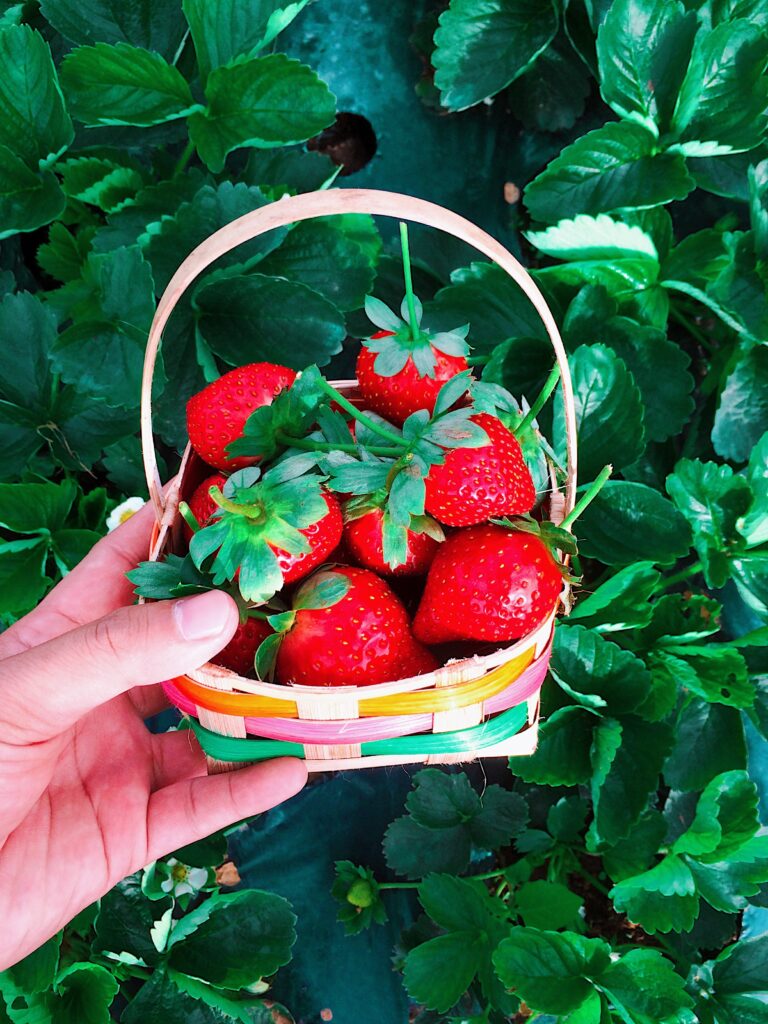
Local and seasonal
Delicious strawberries! When you read those words, what comes to mind? Did you imagine yourself in a winter jacket, reaching for fruits packed in a plastic box in the refrigerated section of a supermarket? Or perhaps it evoked memories of your visit to a local market, where you spotted a pile of juicy red berries at the start of summer? We live in an era where globalization has made it possible to enjoy foods from all corners of the world at any time of the year. However, like many of us, you might also associate strawberries with June rather than January.
Initially, the importance of eating local and seasonal products might not seem immediately relevant. But as we reach deeper into the benefits of embracing this culinary philosophy, it becomes clear that it’s not just about sustainability and supporting local communities. It’s also about relishing the freshest, most flavorful, and nutritious ingredients, with minimal additives.
In this post, we’ll explore numerous reasons why you should consider incorporating more local and seasonal products into your diet, especially to protect your health against potentially hazardous chemicals.
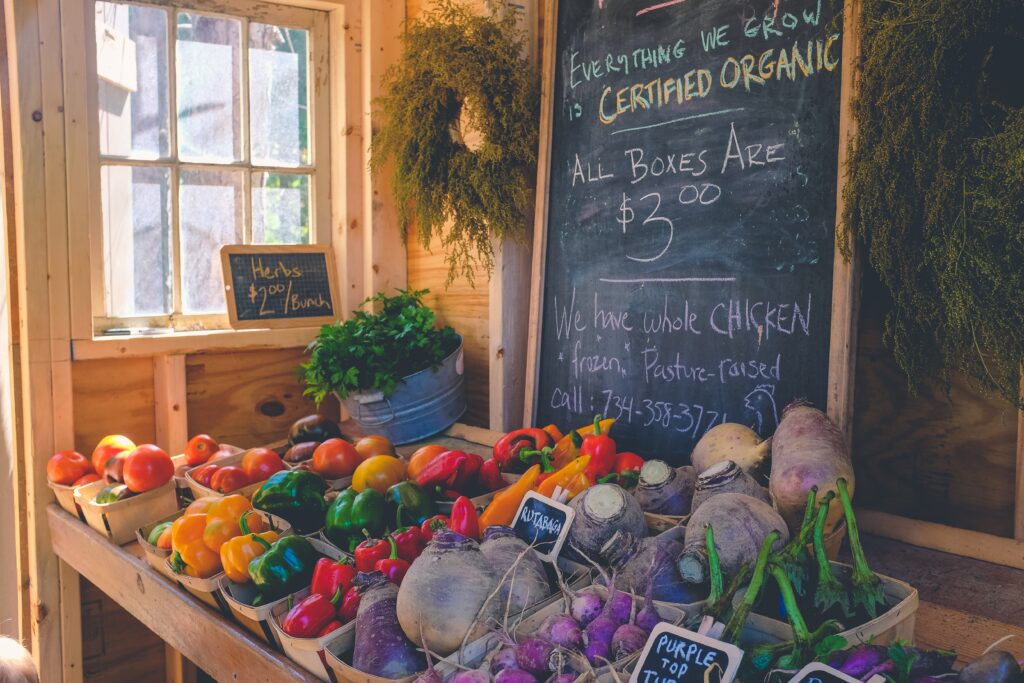
It’s not the Holy Grail
Where can one find such products? The best option is to seek out smaller markets or local farmers who sell their products directly after harvesting. Easier said than done? Try to cultivate curiosity about local producers. Check social media groups; perhaps it’s possible to sign up for fruit and vegetable deliveries? Maybe a weekly farmers’ market takes place in your neighborhood or at the main square of the town you live in? If you feel like you’ve exhausted your options, consider choosing organic or ecological products from your supermarket. Be sure to check and compare prices, not only for potential savings but also to select seasonal foods – the more abundant the fruits and vegetables, the higher the likelihood that it’s their peak season.

Economical aspects
Let’s start with something that is crucial to everyone – money. Obviously, local products are grown closer to where they are sold. This reduces transportation costs, which can be a significant expense in the food supply chain. When produce doesn’t have to travel long distances, the savings on transportation are passed on to consumers, making local fruits and vegetables more affordable.
Local products coincide with the season, and seasonal fruits and vegetables also tend to be more budget-friendly. They thrive in their natural environment during their designated season. Importantly, they require less intervention in terms of climate control, artificial lighting, and pest management. Pesticides and preservatives are yet another topic to discuss (which we will describe below), but for now, let us just mention that choosing what’s local and in season can save you money while allowing you to enjoy high-quality, nutritious food without unnecessary additives.
No doubt, selecting local and seasonal products benefits not only your wallet but also your health and the environment.
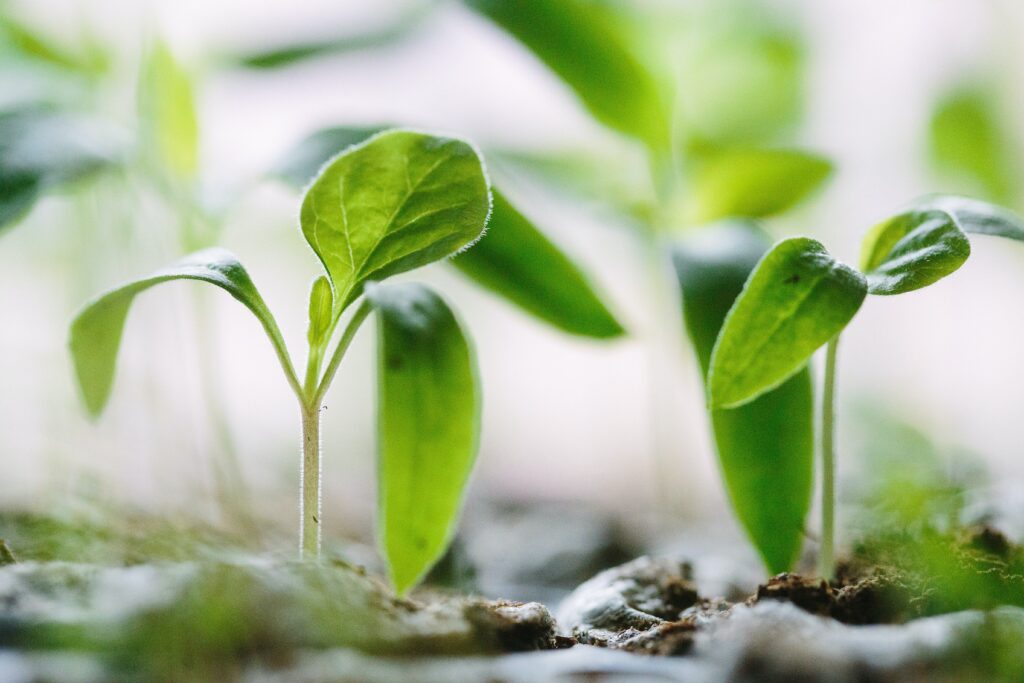
Environmental Sustainability
Opting for local and seasonal products is not only budget-friendly but also a significant advantage for our planet. When you choose such products, you’re making a powerful statement against the environmental costs associated e.g., with global food transportation. By supporting local farmers and reducing the distance your food travels, you actively contribute to a more sustainable and eco-friendly food system. This conscientious choice is a key player in reducing greenhouse gas emissions, as it cuts down on the extensive energy required for long-distance transportation.
But that’s not all – seasonal foods have an even more eco-friendly surprise in store. They are typically fresher and boast a longer shelf life because they haven’t endured extensive journeys. This freshness translates into less waste, both at the production and consumer levels. Reduced food waste not only conserves valuable resources but also decreases the greenhouse gases generated during the decomposition of food.
Moreover, embracing seasonal and local produce aligns your choices with eco-friendly farming practices. Local farmers often prioritize sustainable techniques like crop rotation and organic farming, which foster healthier soils, protect local ecosystems, and reduce the need for harmful pesticides. So, by choosing local and seasonal products, you’re reducing your carbon footprint, fostering biodiversity, and promoting environmentally friendly farming methods.
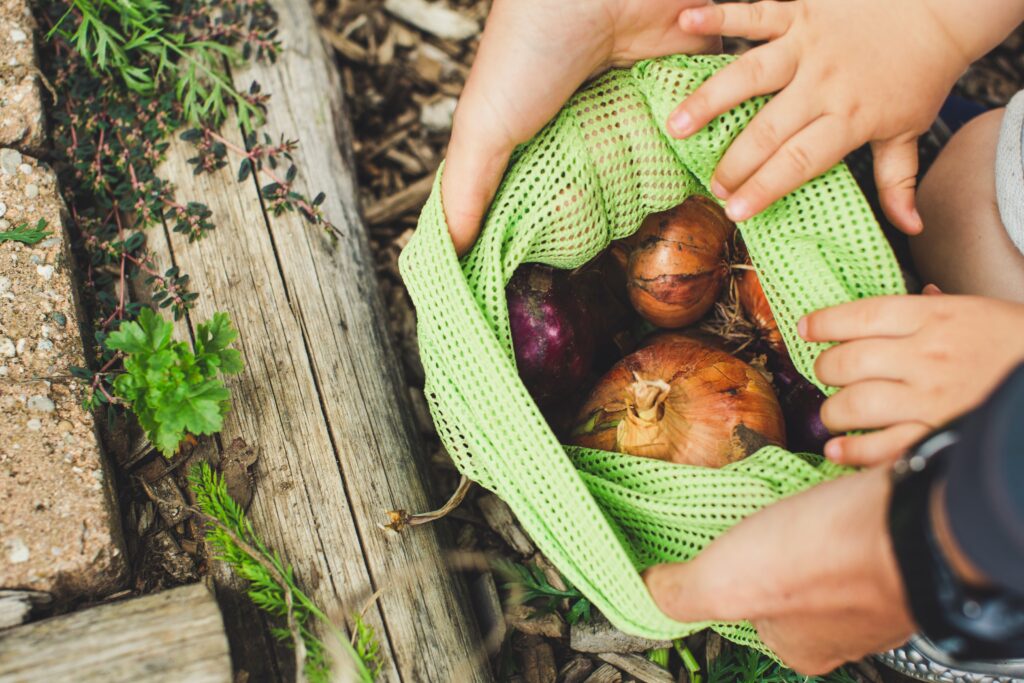
Less chemicals
Local and seasonal products often require fewer chemical interventions. When crops are grown in their natural environment and during their designated season, they are more resistant to pests and diseases. This means that farmers can rely less on synthetic pesticides and herbicides, resulting in produce that is inherently healthier for consumers.
In the modern world, pesticides play a pivotal role in agriculture, helping to protect crops from pests and ensure generous harvests. While these chemicals have undoubtedly contributed to increased food production, a growing body of research suggests that they may come with a hidden cost to our health and the environment. One alarming revelation is that many pesticides are classified as endocrine disruptors (EDs).

Avoid pesticides to protect your hormones
Before delving into the details of pesticides, let’s grasp what EDs are. EDs are substances that interfere with the endocrine system – the complex network of glands and hormones that regulate numerous physiological processes in our bodies (to learn more about EDs and hormonal systems click here ). This disruption can have far-reaching effects, as hormones play a critical role in almost any process in the body including growth, development, metabolism, and reproduction.
While pesticides are designed to target pests, they can affect humans and wildlife. Some pesticides, such as organophosphates and neonicotinoids, have been identified as EDs, which means that they impact our hormonal balance.

Impact of pesticides on the organism
Let’s begin with the fundamentals. Pesticides classified as endocrine disruptors (EDs) have the capacity to mimic natural hormones within the body. This can lead to either overstimulation or inhibition of endocrine functions, ultimately disrupting the delicate hormonal balance.
Certain groups of people are particularly vulnerable to these effects. Exposure to EDs during critical developmental periods, such as pregnancy or childhood, can result in lasting changes in hormone levels and organ development. This, in turn, can give rise to a spectrum of health issues, ranging from developmental delays to fertility problems. Furthermore, exposure to EDs can adversely impact fertility by disrupting the functioning of the reproductive system. In some instances, this may lead to diminished sperm quality, menstrual irregularities, and even infertility. Notably, these chemicals can also interfere with insulin production and glucose regulation. Emerging evidence has linked pesticide exposure to metabolic disorders such as obesity and diabetes

How about nature?
While it may seem overwhelming, it’s essential to remember that it’s not just our health at stake. Endocrine disruptors can have devastating effects on wildlife and ecosystems. Pesticides that leach into groundwater and surface water contaminate water bodies and pose a risk to drinking water sources. Moreover, these chemicals can disrupt aquatic life and harm species that rely on these habitats. Excessive pesticide use can also harm beneficial soil microorganisms, reduce soil fertility, and lead to long-term soil degradation. Over time, prolonged pesticide use may result in pesticide-resistant pests and weeds, necessitating the use of even more potent chemicals or alternative pest control methods.
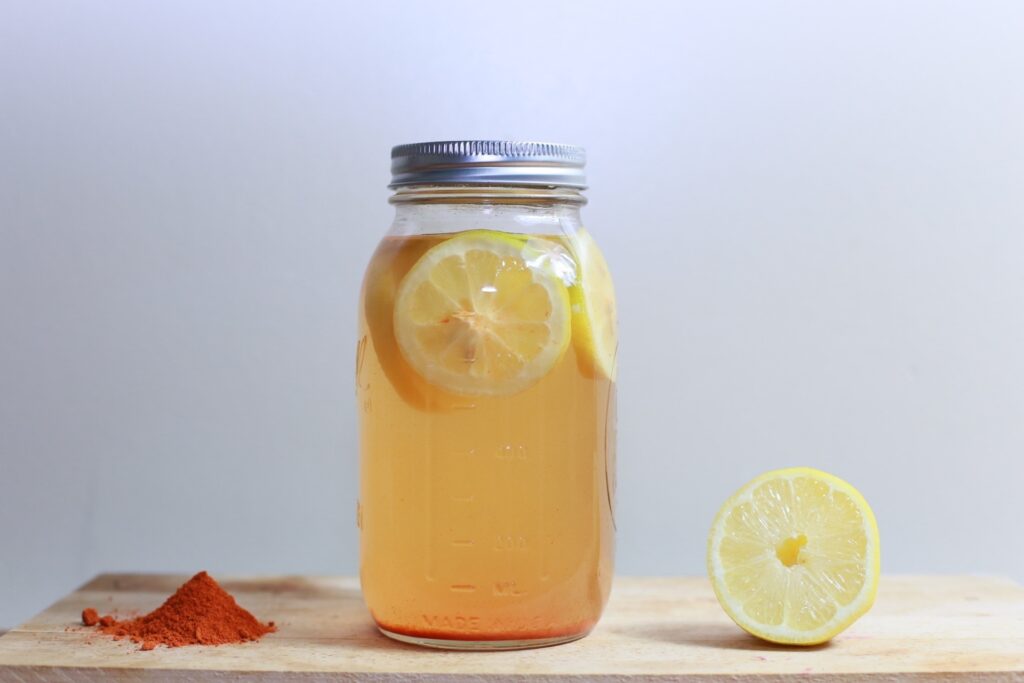
Try to reduce your exposure in 3 steps
The potential dangers of pesticides as endocrine disruptors are undeniably concerning. However, we hold the power to take small, everyday actions that can significantly minimize our exposure to these harmful chemicals. Here are three essential tips to help you reduce your contact with pesticides.
- Choose organic products. Whenever possible, opt for organic (or ecological) produce. Organic farming practices tend to use fewer synthetic pesticides and focus on natural alternatives.
- Wash and peel. Thoroughly wash fruits and vegetables. Use running water and gently rub them to remove pesticide residue. Using a sodium bicarbonate (baking soda) solution can be a method for partial (<40%) reduction of pesticide residues on certain fruits and vegetables. Additionally, consider peeling when appropriate, as it can further reduce your exposure to pesticides. If you prefer to keep the peels for added nutrients and flavor, opt for organic products.
- Support local and sustainable agriculture. Make a conscious choice to support local farming practices that prioritize sustainability and minimize chemical inputs. By doing so, you not only promote healthier food options but also reduce your exposure to potentially hazardous substances. Stay informed about pesticide use in your area to make informed decisions that align with your values and health.

DIY baking soda solution
Important! If you are a pregnant woman – buying organic fruits and vegetables is the best and healthiest choice.
It’s worth noting that baking soda solution can help partially reduce pesticide residues on the surface of fruits and vegetables, it may not eliminate all residues, especially if pesticides have been absorbed into the produce or are present within the flesh. However, it remains a practical and accessible way to enhance the safety of your fresh product. How to do it?
Fill the bowl with water to completely submerge the fruits or vegetables. Add a few tablespoons of baking soda to the water. You can use about 1-2 teaspoons of baking soda per 2 cups of water. Stir to dissolve the baking soda in the water.
Place the fruits or vegetables in the solution and soak for about 15 minutes. You can gently agitate the water occasionally to help dislodge any residues. After soaking, rinse the produce thoroughly under running water to remove any baking soda and pesticide residues. Use a brush or your fingers to scrub the surface if needed, particularly for items with textured skin. By following these steps, you can confidently enhance the safety of your fresh produce and savor the peace of mind that comes with cleaner, healthier eating.
Remember, this action helps us to reduce no more than 40% of pesticides. Try to peel the fruits/vegetables as frequently as possible.

The power of small changes
In our fast-paced, modern world, it is absolutely crucial to recognize the importance of understanding the origins and cultivation methods of our food. Chances are that you are part of a growing community of conscious consumers who prioritize healthier and more eco-friendly options. Because choosing local and seasonal products isn’t just about enjoying fresh, flavorful food – it’s also a powerful way to make environmentally sustainable choices. The choices will additionally protect you, your loved ones, and nature from hazardous chemicals.
So why not give it a try? The next time you’re at the market, consider the numerous benefits of selecting local and seasonal items. By making choices aligned with your values, you’re not only nourishing your health but also contributing to a more sustainable and greener future for all. Your actions can make a meaningful difference!
Read more:
Jabłońska-Trypuć, Agata et al. “The impact of pesticides on oxidative stress level in human organism and their activity as an endocrine disruptor.” Journal of environmental science and health. Part. B, Pesticides, food contaminants, and agricultural wastes vol. 52,7 (2017): 483-494. doi:10.1080/03601234.2017.1303322. PMID: 28541098
Khalil, William Junior et al. “Environmental Pollution and the Risk of Developing Metabolic Disorders: Obesity and Diabetes.” International journal of molecular sciences vol. 24,10 8870. 17 May. 2023, doi:10.3390/ijms24108870. PMID: 37240215
Yang, Tianxi et al. “Effectiveness of Commercial and Homemade Washing Agents in Removing Pesticide Residues on and in Apples.” Journal of agricultural and food chemistry vol. 65,44 (2017): 9744-9752. doi:10.1021/acs.jafc.7b03118. PMID: 29067814
World Health Organization. Pesticide residues in food. WHO 2022. https://www.who.int/news-room/fact-sheets/detail/pesticide-residues-in-food?fbclid=IwAR0acYv7tkt6LeQ3tZwRo2-0nnmynjWwT4emO0vI01hkQHf-KFRYN9uN3b0

